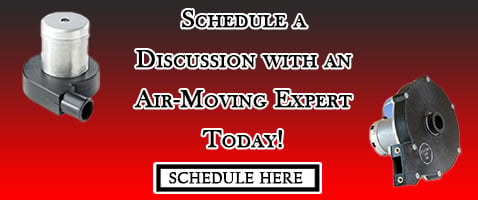 Consider inrush and operating current, two values relating to a blower motor’s input capacity and output profile. Depending on the context, inrush current — sometimes called locked-rotor amps or starting inrush — is the current a motor draws upon starting with full application voltage.
Consider inrush and operating current, two values relating to a blower motor’s input capacity and output profile. Depending on the context, inrush current — sometimes called locked-rotor amps or starting inrush — is the current a motor draws upon starting with full application voltage.
Inrush essentially causes a freshly electrified motor (as well as electrical supplies and any connected drive components) to function as a large capacitor, one that requires charging until the circuit reaches normal operating power.
With across-the-line ac starting, the blower-motor system intakes full voltage and draws line amperage that’s often 300% to 600% more than its rated operating current — or in the case of some high-performance setups, to 800% more than operating current. Motor horsepower and drive connections (if applicable) and design dictate the exact value of this inrush current.
Contrast this with operating current, which is current the blower motor draws once it’s up and running. This is drawn once the whole system circuit is energized with all the circuit subcomponents saturated, and in the case of brushless blower setups with drives, all capacitors charged — and the motor beginning to turn. At this point, the blower-motor system needs only steady-state current to keep the loaded motor at the target rpm.
What design features accommodate these different current values to maximize blower output, efficiency and life?

Let's consider the special case of brush motors for blowers. Here, back EMF contributes a current-limiting function to winding resistance and inductance — but only once a motor is running. Back EMF is zero upon startup since the rotor begins at zero rpm and winding resistance is relatively low. So again, current through the windings is large upon initial power application. Such current draw can induce detrimental voltage drops in the system, even degrading the performance of other devices in the circuit and tripping overload safeties. That’s why these motors often use current limiters until rpms can sustain sufficient back EMF.
In contrast, consider the special case of brushless motors for blowers, the focus of example calculations in this particular blog topic. Within this motor type, windings are spared significant exposure to inrush current. That’s because of the necessary inclusion of a power supply or control drive that also happens to bear the brunt of inrush current. The capacitive function of the power module or control drive for converting ac to dc voltage intervenes. Here's a case in point: Within a control drive, the bridge rectifier and line capacitors charge first; these subcomponents are the first in the line of fire of the inrush current.
As we explore in other AMETEK blower blogs, power modules and control drives for brushless motors bring other benefits, as the application of various drive functions can minimize or even avoid inrush issues altogether. In fact, some of these offerings are particularly useful if a system requires a blower setup to start and stop often. In this case, some manufacturers recommend using supply or drive speed commands as a better approach to actual motor stopping and starting.
In contrast, other motor types — including the brush motors already mentioned — rely on construction features as well as power cables having conductors of sufficient AWG size to withstand these inrush currents and prevent excessive voltage drops. Many address inrush with inrush-current limiters in the form of thermistors, transformer switching relays or pre-charge circuits. Motor starters, including soft starters for ac motors are other motion components to help address inrush current.
Keep in mind that timing matters. Location on the ac line-power sine wave at which a power switch closes affects inrush current. So if it is switched at the peak of the sine wave, the inrush spike is the highest — and of short duration.
 Consider one example to illustrate this: When switched near the peak yields, one brushless motor’s windings might see a 150-A peak, but only for a duration of three msec. In contrast, if switched near the zero crossing, the spike is smaller, yet of longer duration. For this example, switching near the zero crossing point might yield an inrush current of only 50 A, having a duration of seven msec followed by a second pulse.
Consider one example to illustrate this: When switched near the peak yields, one brushless motor’s windings might see a 150-A peak, but only for a duration of three msec. In contrast, if switched near the zero crossing, the spike is smaller, yet of longer duration. For this example, switching near the zero crossing point might yield an inrush current of only 50 A, having a duration of seven msec followed by a second pulse.
Note that these values are motor specific, as inrush current depends on the circuit’s amount of resistance, control-drive capacitor size — and signal-filtering settings.
At AMETEK Dynamic Fluid Solutions, we understand you’re looking for more than just an off-the-shelf part or one-time solution. You need a true technology partner who understands your engineering challenge that is focused on you, providing customized, collaborative solutions. We’ll also provide you with excellent customer service for a great total experience.






